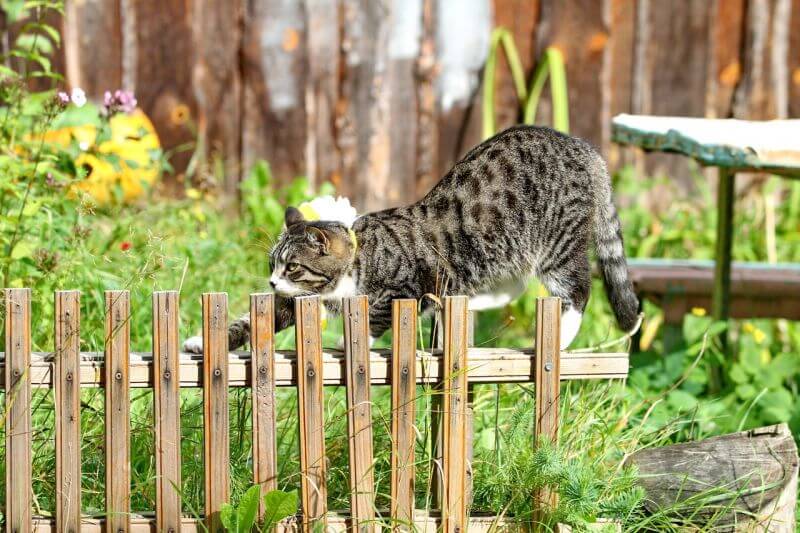The stomach lining protects the stomach from the stomach acid, which is important for the digestion of food. If the mucous membrane becomes inflamed, it is not only painful but also dangerous for cats. We have summarized for you how inflammation of the gastric mucosa occurs in cats and what consequences it has.
How Dangerous is Stomach Inflammation in Cats?

If left untreated, gastritis leads to painful stomach ulcers (ulcers). If such an ulcer eats its way through the stomach wall or hits a large blood vessel, your cat may bleed to death internally. Therefore, you should take inflammation of the gastric mucosa seriously and have it treated by a veterinarian at an early stage.
Symptoms: How Does Inflammation of the Stomach Lining Show Up in Cats?
Basically, there are two types of gastric mucosal inflammation in cats: acute gastritis occurs suddenly, while chronic gastritis takes a long time.
In either case, if your cat’s irritated stomach lining is inflamed:
- Your cat will lose weight due to loss of appetite and unwillingness to eat.
- She vomits or chokes up recently ingested food or yellow mucus (bile).
- If your cat is in pain, it grinds its teeth or it can no longer be touched, especially in the upper abdomen.
- Your cat eats a lot of grass.
- She salivates heavily so that light foam forms on her mouth.
- Your cat sleeps more and outdoor cats are less likely to go outside.
Diagnosis: How is Gastritis Detected in Cats?
The earlier you show your cat to the vet, the better the prognosis. With the help of exclusion diagnostics, a veterinarian can usually find out the underlying cause very quickly.
Some of the following diagnostic agents are necessary to be able to reliably detect gastric mucosal inflammation in cats and its causes:
Ultrasound & X-ray
An ultrasound scan allows the vet to examine your cat’s stomach wall from the outside and measure the thickness of the stomach wall. If it is thickened, it suggests that your cat may have an inflammation of the stomach lining.
In addition, the vet can use an X-ray examination to make foreign bodies or structural changes in the stomach visible.
Gastroscopy
Using a gastroscope, a tube with a camera, the vet can view the inside of your cat’s stomach lining. He pays attention to whether the mucous membrane is reddened or whether a painful stomach ulcer has already formed.
Biopsy
The cells of the mucous membrane reveal a lot about the health of the cat’s stomach. In order to obtain this for a subsequent histological examination, the vet takes a tissue sample from your cat under anesthesia.
Inflammation values
If your cat’s stomach is inflamed, the levels of inflammation in the blood increase. Depending on the cause of the inflammatory stomach disease, other blood parameters can also decrease or increase. This allows the veterinarian to identify common kidney disease or liver damage in cats.
Exclusion of parasites
Various types of parasites can damage the lining of the cat, causing inflammation of the stomach lining in cats. In order to rule out parasite infestation, it is therefore important that your veterinarian examines collected fecal samples for several days.
Therapy: How is Gastric Mucosal Inflammation Treated in Cats?
In addition to targeted therapy, the treatment of gastritis also requires supportive measures that temporarily relieve your cat’s symptoms.
The following measures improve the general well-being of your velvet paw:
- Pain medication
- Anti-inflammatory drugs
- Stomach protection tablets (proton pump inhibitors)
- Refraining from food (food abstinence) for six to twelve hours with a long-term change in food
if necessary, the administration of fluids (infusion) - In order to protect your tiger permanently from gastritis, you must also work with the veterinarian to combat the underlying cause. You can also achieve this by giving wormers, special drugs, or antibiotics against bacterial infections.
If your cat has a stomach tumor or has ingested a foreign body, the doctor may need to operate on it.
Precaution: How to Protect Your Cat from Gastritis

There are several things you can do to help prevent inflammation of the stomach lining in cats. These include the following prophylactic measures:
Eat a balanced diet. Should you change the food once, do so for several weeks. Because this way the stomach can get used to the new food. You can also prevent many infectious diseases by vaccinating your cat.
In addition, you should avoid stress whenever possible. Because this can irritate the stomach and lead to inflammation. If you are expecting a large visitor or a new animal, you can, in consultation with the veterinarian, use stress-relieving agents such as pheromones for cats.
